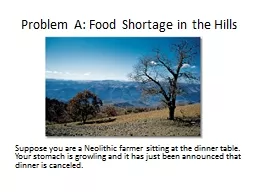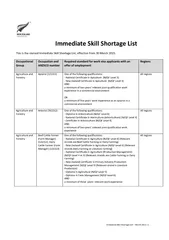PPT-Problem A: Food Shortage in the Hills
Author : marina-yarberry | Published Date : 2016-04-21
Suppose you are a N eolithic farmer sitting at the dinner table Your stomach is growling and it has just been announced that dinner is canceled Problem A Food
Presentation Embed Code
Download Presentation
Download Presentation The PPT/PDF document "Problem A: Food Shortage in the Hills" is the property of its rightful owner. Permission is granted to download and print the materials on this website for personal, non-commercial use only, and to display it on your personal computer provided you do not modify the materials and that you retain all copyright notices contained in the materials. By downloading content from our website, you accept the terms of this agreement.
Problem A: Food Shortage in the Hills: Transcript
Download Rules Of Document
"Problem A: Food Shortage in the Hills"The content belongs to its owner. You may download and print it for personal use, without modification, and keep all copyright notices. By downloading, you agree to these terms.
Related Documents














